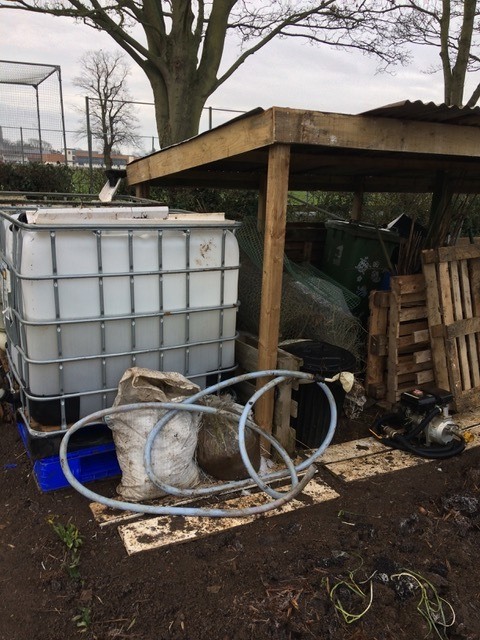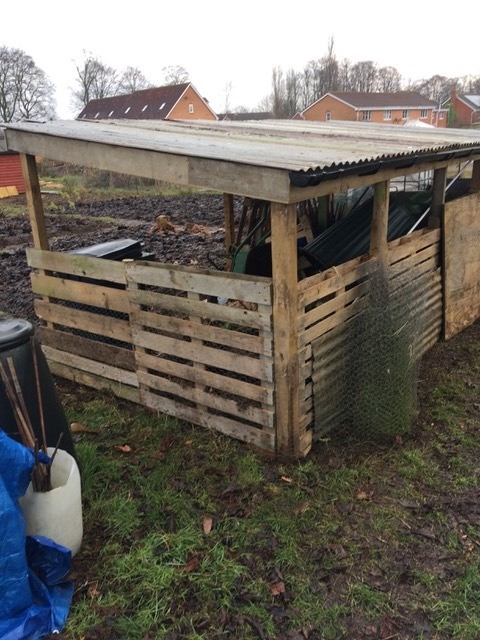Water cubes!
You might think that the depths of winter is a time when no-one does anything on site, but we have been busy during January, particularly with water cubes / IBCs.
My Mark 1 harvester is now up and collecting (along the central path to the end opposite the main gate, then look left). This is what you should see.
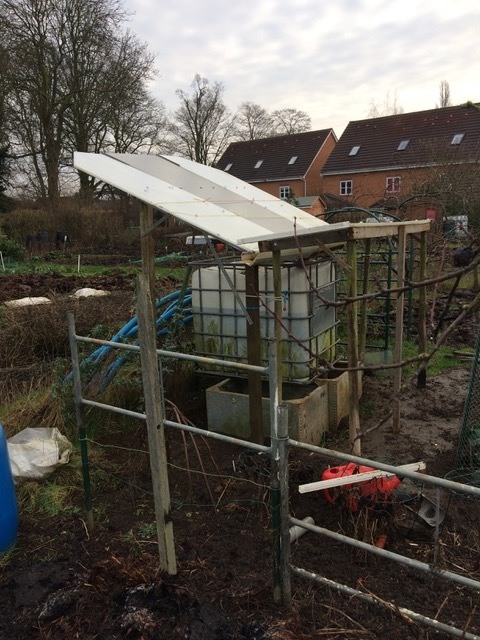
The cost of this was minimal – just fittings – so we can collect even more free water for nothing! Neither did it take very long to plan or construct.
A year on, the violent winds in February have brought forward the construction of the water harvester Mark 2!
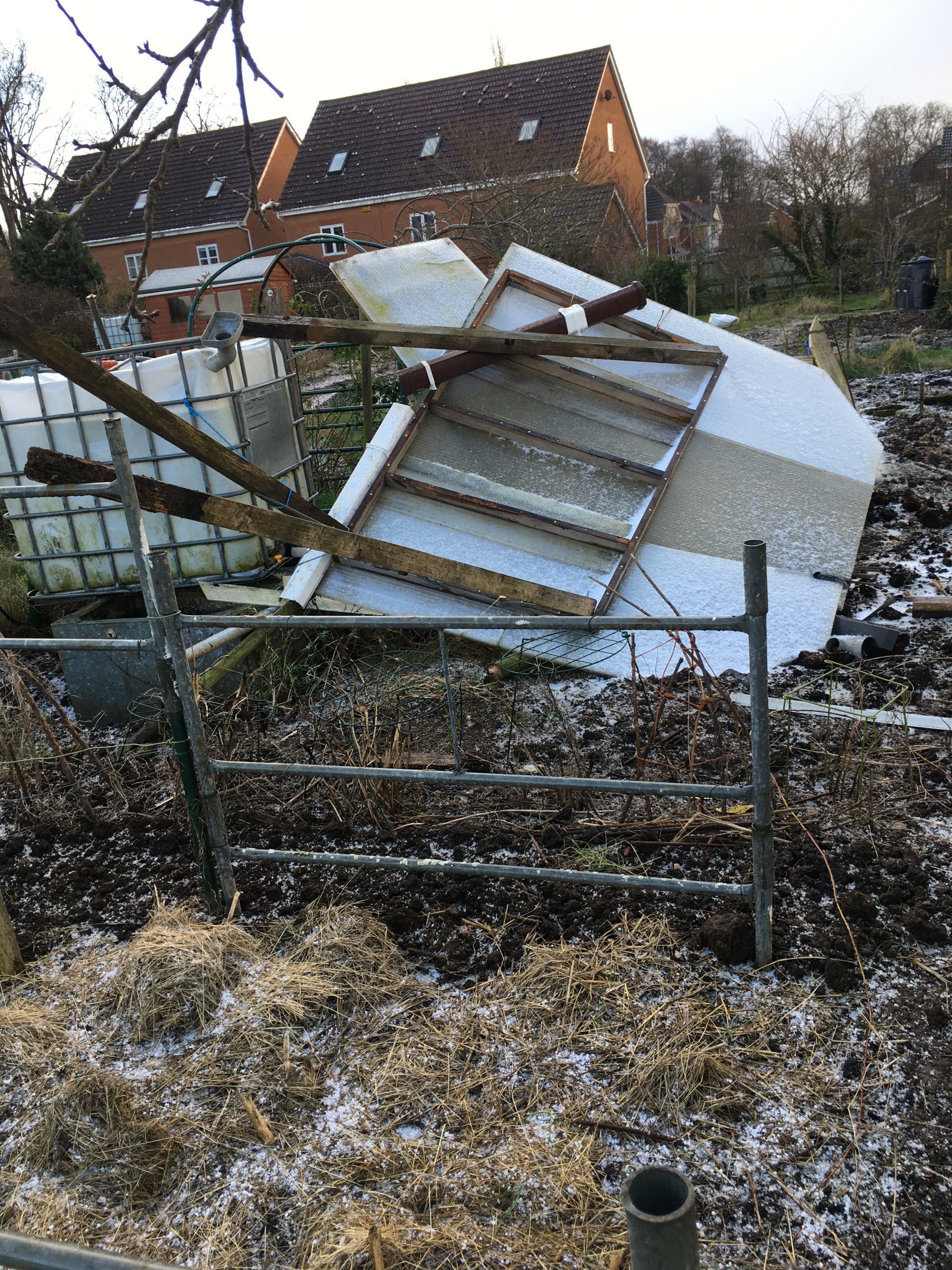
The posts holding the front section in place were clearly not up to the task and when they broke off, the rest of the structure toppled over. Impressively, the perspex sheets remained intact and the larger posts suffered only minor damage. For the Mark 2, the ‘sail effect’ of the back section was reduced by a third by removing one of the perspex panels and setting them up horizontally. This obviously reduces water collecting ability, but is a worthwhile trade-off if the structure gains in stability.
Supplementary posts were added at the sides and extra coach bolts fix the tops of these posts to the wooden frame beneath the perspex sheets. The difficulty has been finding moments when it has not been pouring or blowing a gale to be able to fix the roof onto the structure; there are also some extra chains holding it place … which seemed to have worked, since the night after the Mark 2 was installed was particularly windy. In the morning, nothing had moved: long may it last!
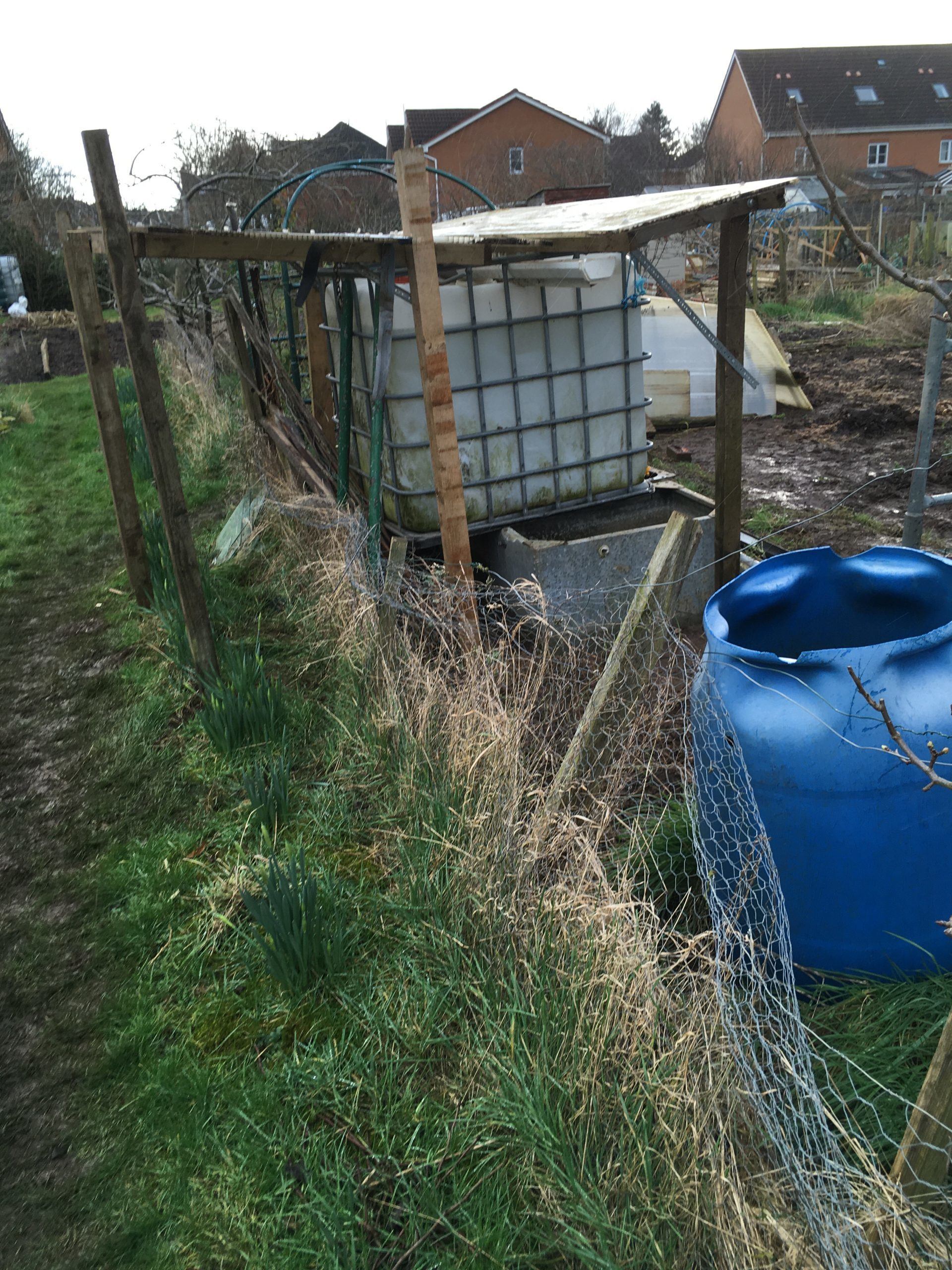
There is an even more extravagant idea along the path that leads past the geese. The impressive thing here is that it took just a couple of days to transform this area and to use the massive surface area to start to collect water. Have a look at the ‘stable’ with the zinc roof …
